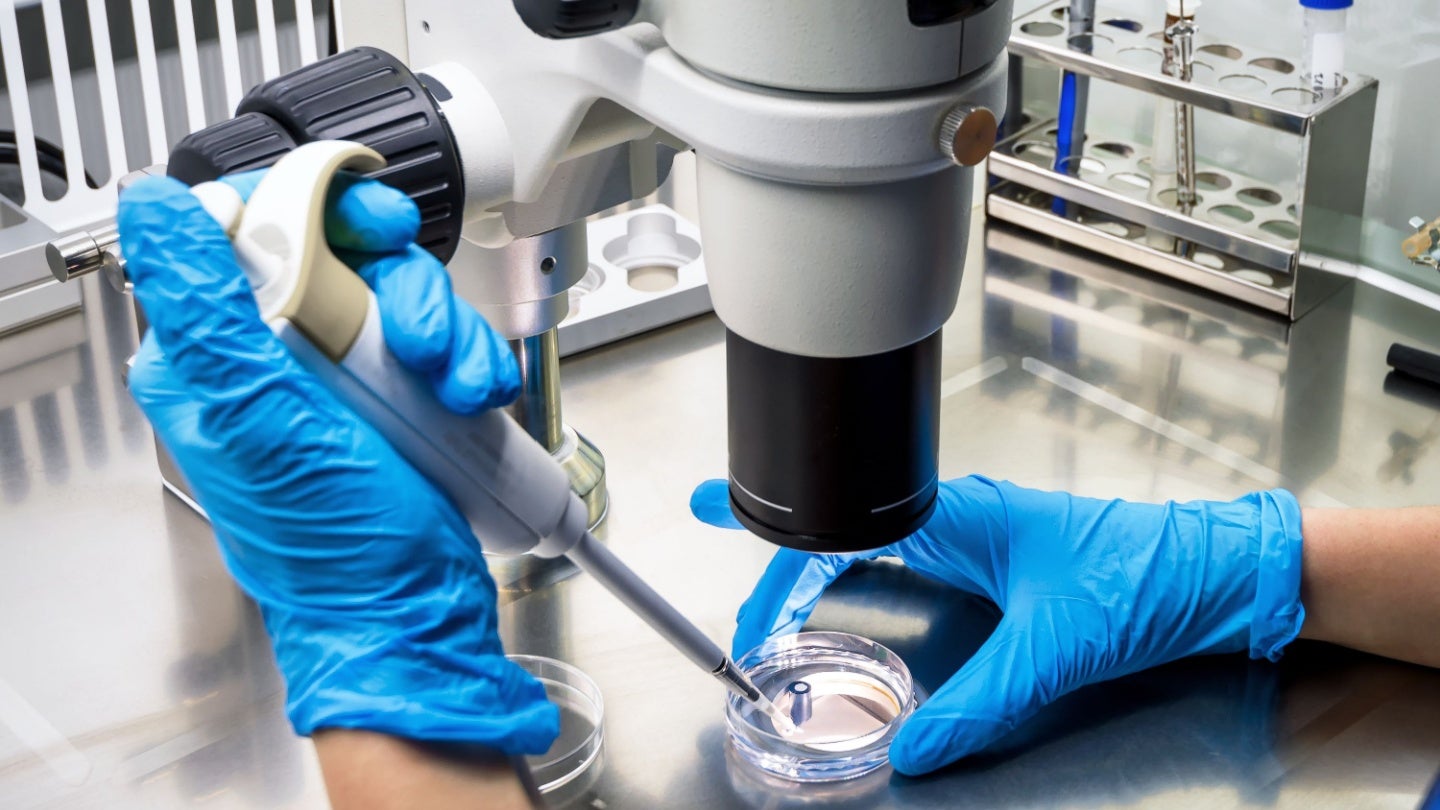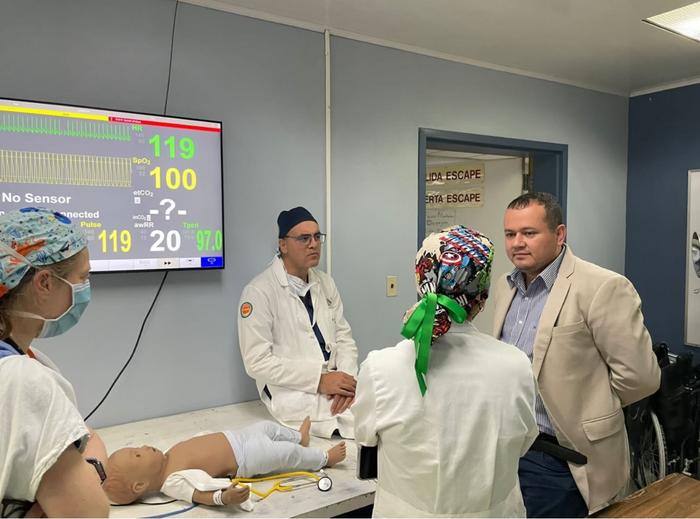In Vivo Screen Identifies Mosquito Malaria Targets
In an era where malaria continues to devastate millions of lives worldwide, innovative strategies to curb the transmission of this deadly disease are crucial. A groundbreaking study has now revealed promising advances in the development of next-generation long-lasting insecticidal nets (LLINs) embedded with novel compounds that demonstrate remarkable efficacy against the malaria parasite within mosquitoes. […]


In an era where malaria continues to devastate millions of lives worldwide, innovative strategies to curb the transmission of this deadly disease are crucial. A groundbreaking study has now revealed promising advances in the development of next-generation long-lasting insecticidal nets (LLINs) embedded with novel compounds that demonstrate remarkable efficacy against the malaria parasite within mosquitoes. These findings hold transformative potential for global malaria control efforts, especially in regions grappling with insecticide resistance.
Central to this research is the discovery and utilization of two compounds, ELQ-453 and ELQ-613, which exhibit potent antiplasmodial activity, meaning they effectively disrupt the development of the malaria parasite, Plasmodium falciparum, within mosquito vectors. Unlike traditional insecticides that primarily aim to kill or repel mosquitoes, these compounds act by blocking parasite development post-bite, representing a paradigm shift in controlling malaria transmission. This dual-action approach not only curtails infection rates but also targets the parasite’s lifecycle within the mosquito, thereby shrinking the reservoir of infectious vectors.
The scientists embarked on a rigorous testing regimen to assess whether ELQ-453 and ELQ-613 could withstand the demanding manufacturing conditions required for incorporation into LLINs. Specifically, they focused on embedding these compounds into low-density polyethylene (LDPE), a polymer commonly used in bed net production. Given the high-temperature extrusion process necessary to form resistant polymer films, it was critical to establish that the compounds retained their biological activity after such thermal exposure. Impressively, films containing 1%, 5%, and even 0.4% by weight of the compounds maintained complete inhibition of parasite infection following brief tarsal (foot) contact.
This study’s meticulous design also included long-term stability assessments, an essential marker for field applicability. Remarkably, the impregnated LDPE films, even after one year of storage at room temperature with exposure to light, continued to demonstrate profound antiplasmodial effects. These observations suggest the compounds’ robustness and potential for deployment in real-world environments where storage conditions may vary and prolonged efficacy is mandatory.
One of the most significant challenges in malaria control has been the rise of insecticide-resistant mosquito populations. The team prudently tested the LDPE films against a strain of Anopheles gambiae mosquitoes known for their resistance to standard insecticides. Encouragingly, the ELQ-loaded polymer films abolished parasite development in these resistant mosquitoes, highlighting the compounds’ unique mode of action that circumvents traditional resistance mechanisms. This finding bodes well for the sustained effectiveness of nets incorporating ELQ compounds in diverse entomological landscapes.
Furthermore, the protective longevity conferred by ELQ-treated nets was evaluated in time-course experiments to simulate real-life scenarios of mosquito exposure and subsequent pathogen transmission. Exposure of female mosquitoes to films containing 1% ELQ-453 and ELQ-613 conferred complete protection against parasite development for at least two days post-contact. Even extending to four days, mosquitoes exhibited markedly reduced parasite prevalence and intensity. This sustained prophylactic effect suggests that mosquitoes encountering treated nets—even if they delay feeding on infected hosts—would remain refractory to carrying the malaria parasite, thereby reducing transmission potential.
Beyond LDPE, the researchers expanded their assessment to polyester nets, another predominant material in malaria-endemic regions. Dipping polyester nets into a solution containing equal parts of ELQ-453 and ELQ-613 dissolved in acetone resulted in a durable coating that demonstrated potent, dose-dependent inhibition of parasite development. Even at concentrations as low as 50 mg per square meter, the combination achieved full suppression of malaria parasites post-mosquito contact. This versatility across different net formulations amplifies the feasibility of integrating these compounds into existing bed net manufacturing chains.
Beyond simple impregnation methods, the team explored the extrusion of ELQ compounds directly into high-density polyethylene (HDPE) films at 1% by weight, replicating industrial polymer yarn production processes employed in LLIN manufacture. The resulting ELQ-incorporated HDPE films preserved full antiplasmodial activity, evidencing compatibility of the compounds with industrial fabrication techniques and hinting at scalability for mass production. Such integration is critical for transitioning laboratory discoveries into accessible public health tools.
These comprehensive findings collectively underscore the potential of ELQ compounds to revolutionize malaria vector control by offering a chemical intervention that targets the parasite within the mosquito, transcending the limitations posed by insecticide resistance. The durability, thermal stability, and cross-compatibility with various polymer substrates suggest these compounds can be seamlessly adapted into current LLIN technologies, enhancing their efficacy profile.
Equally important is the implication of these results for global malaria eradication ambitions. By impeding parasite development within the key vector species and maintaining activity under field-relevant conditions, ELQ-based nets could significantly reduce transmission intensity. The extended protective window after mosquito contact further hints at a sustained community-wide benefit, weakening the malaria transmission cycle more effectively than conventional insecticides alone.
Moreover, the deployment of this novel strategy could potentially alleviate the evolutionary arms race with mosquito vectors by reducing selective pressures that foster insecticide resistance. Targeting the parasite directly inside the mosquito offers an alternative pathway to lower malaria burden without relying solely on vector mortality, which is the current bedrock of LLIN efficacy.
While these advances mark a seminal step forward, further research and field trials will be essential to assess safety profiles, cost-effectiveness, and large-scale implementation logistics. The promising laboratory data, however, set a solid foundation for the progressive development of next-generation malaria interventions that blend molecular innovation with pragmatic vector control.
In summary, the meticulous work elucidated by Probst and colleagues reveals a compelling new avenue for malaria control through the integration of potent antiplasmodial compounds into bed net polymers. These findings not only demonstrate the feasibility of thermal extrusion incorporation but also confirm the stability and enduring efficacy of ELQ compounds under real-world conditions including in insecticide-resistant mosquitoes. This transformative approach could reconfigure the malaria control landscape, heralding a new era where the mosquito’s very capacity to harbor and transmit parasites is effectively nullified.
The study stands as a testament to the power of interdisciplinary strategies in combating infectious diseases, merging chemical biology, materials science, and vector control. As malaria continues to claim lives globally, innovations such as ELQ-embedded nets offer renewed hope for durable, scalable, and effective interventions that can tip the scales in humanity’s favor.
Subject of Research:
Malaria vector control; antiplasmodial compounds incorporated into polymer-based long-lasting insecticidal nets (LLINs); efficacy and stability of ELQ-453 and ELQ-613 against Plasmodium falciparum in Anopheles mosquitoes.
Article Title:
In vivo screen of Plasmodium targets for mosquito-based malaria control.
Article References:
Probst, A.S., Paton, D.G., Appetecchia, F. et al. In vivo screen of Plasmodium targets for mosquito-based malaria control. Nature (2025). https://doi.org/10.1038/s41586-025-09039-2
Image Credits:
AI Generated
Tags: antiplasmodial compoundsELQ-453 and ELQ-613Global Health Initiativesinnovative malaria strategiesinsecticide resistance solutionslong-lasting insecticidal netsmalaria transmission preventionmosquito malaria controlmosquito-borne disease researchnext-generation insecticidal netsPlasmodium falciparum lifecyclepolymer embedding technology
What's Your Reaction?


































